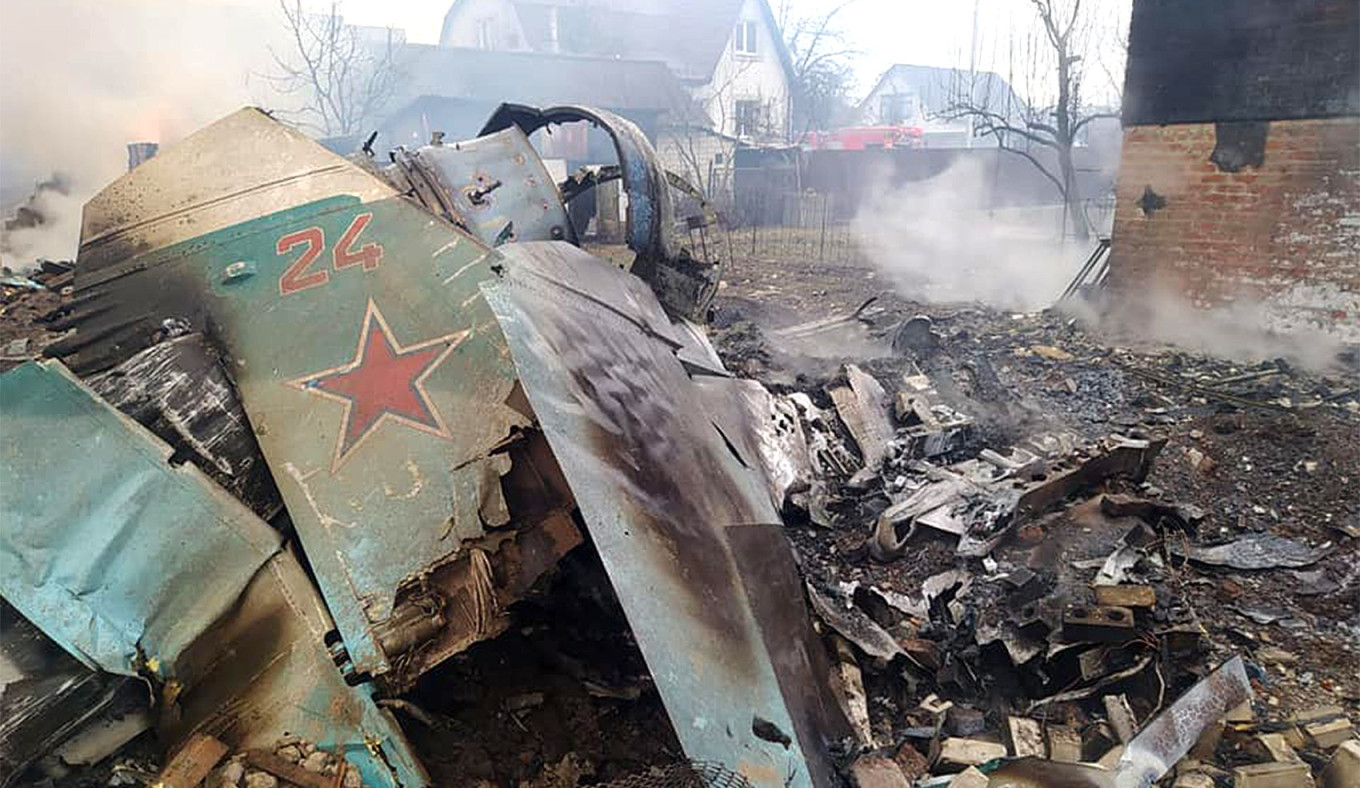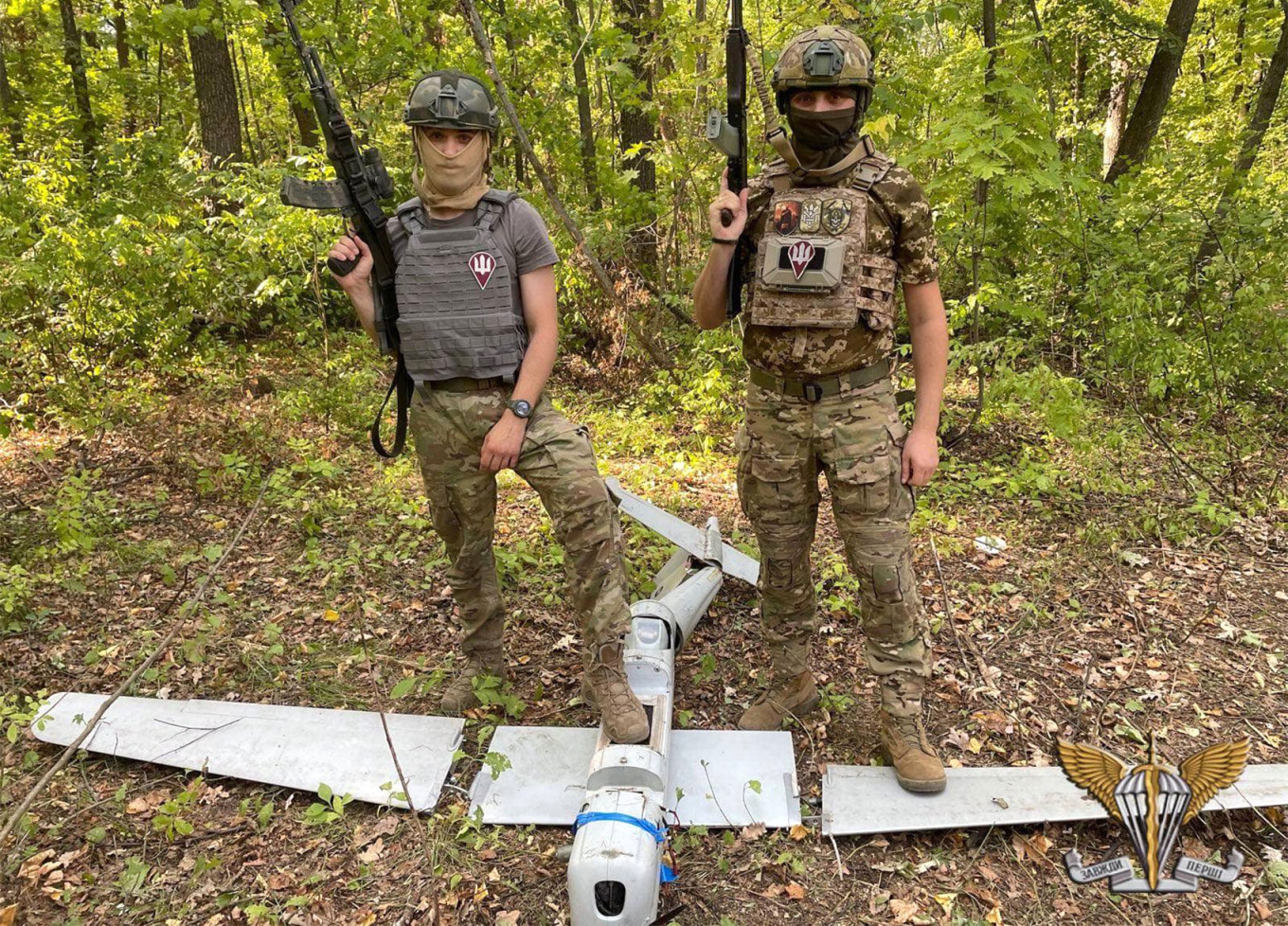As the sun set in the Siberian city of Irkutsk on Sunday, an Su-30 Russian military fighter jet nose-dived into a two-story house, exploding on impact and killing its two-man crew — the second time in days that a military jet crashed in Russia.
Last week an Su-34 fighter bomber crashed into an apartment block in the southern city of Yeysk, killing 15 people including three children.
While investigators have blamed both crashes on technical failure and pilot error, two such visible accidents within a week of each other highlight the challenges facing Russia’s Air Force after eight months of war with Ukraine.
Having failed to gain early air superiority in the conflict, the Air Force has continued to play a supporting role in Moscow’s invasion, a failure some analysts say is central to the faltering performance of Russian forces in Ukraine as a whole.
“The Russian Air Force is being used episodically, mostly to support the Armed Forces on the frontline,” said Leonid Nersisyan, a defense analyst and head of the Armenian Research & Development Institute.
After billions of rubles were invested in modernizing Russia’s Air Force over the past decade, many analysts predicted that Russian air power would quickly overwhelm Ukraine’s defenses, gaining free reign in the skies over Kyiv.
But heavy losses in early March pushed the Air Force to adopt more risk-averse tactics, playing a subordinate role to Russia’s ground troops, a move analysts have attributed to the inexperience of pilots in Russia’s recently modernized fleet as well as the differing Russian approach to the use of air power in combat.
“After suffering heavy losses in the first 10 days of March, Russia was forced to revise its approach and has remained risk averse in Ukraine,” said Guy Plopsky, an independent Israeli defense analyst focusing on the Russian military.

Unlike a NATO-trained air force, which would quickly look to establish its dominance in a war by flying complex sorties to root out enemy air defenses, gather intelligence and eliminate enemy air infrastructure, Russia’s Air Force has mainly been used in Ukraine as an extension of frontline power.
This has meant taking off from airbases in southern Russia and Belarus to fly rapid-bombing sorties over Ukrainian territory at low altitudes.
“The fixed-wing aircraft Russia is primarily using to conduct strikes are the Su-25 ground attack, and Su-34 strike fighter,” said Plopsky.
“The Su-25s take off in pairs or sometimes in groups of four, ingress to a target area at low altitude, maybe 50 meters or less, and then lob the rockets and bank left or right and return back to base,” he added.
Footage shared last month by Fighterbomber, a pro-Kremlin military blogger, displayed exactly these tactics in use, as two Russian Su-25s flying at low altitudes to avoid enemy air defenses dropped bombs on a target while narrowly evading a Ukrainian surface-to-air missile.
Such attacks have been unrelenting throughout the war.
According to recent figures cited by General Sergei Surovikin, the new head of Russian operations in Ukraine, Russia has flown a total of 34,000 combat sorties in Ukraine since Feb. 24, or roughly 150 per day.
Those sorties have almost exclusively been launched from air bases in southern Russia and Belarus, including the Morozovsk, Millerovo and Taganrog air bases in the Rostov region, Baltimor air base in the southern Russian region of Voronezh, as well as the Saki air base on the annexed Crimean peninsula.
But while these tactics have allowed Russia to limit its losses in Ukraine, analysts estimate that they have also impacted the level of air support its jets can offer. Without the intricate multi-aircraft sorties required for intelligence gathering, Russian pilots are often reliant on ground troops to provide them with target coordinates.
“We send them the coordinates where Nazis are located and we are very pleased when [those places] are shelled,” said one post on Reverse Side of the Medal, a pro-war Telegram channel with alleged links to the Wagner mercenary group.

Dubious intelligence and the use of unguided munitions means strikes by jets are often ineffective, Plopsky said. “Sometimes the pilots might not even know what they’re bombing,” he added.
The Russian Air Force has become the subject of much scrutiny since the war in Ukraine began, despite Moscow investing vast sums of money to build one of the world’s largest air forces.
Technology onboard its aircraft has been shown to lag behind that used by NATO air forces. Russia’s approximately 7,500 pilots, meanwhile, have been criticized for their lack of experience, with their flying time roughly 100 hours per year, one-third less than their NATO counterparts.
“They’re decent at attacking pre-planned targets, but dynamic targets are a really big weakness,” Plopsky said.
Following the Ukrainian military’s counteroffensive on the Kharkiv region in September, Russian units quickly deployed the Air Force in the hopes of halting Kyiv’s progress.
Despite the Fighterbomber channel claiming two days into Kyiv’s counteroffensive that aviation was “working successfully in the Kharkiv region,” the Russian military was unable to prevent the rapid Ukrainian advance, which saw Kyiv recapture 10,000 square kilometers of territory in just a matter of days.
Footage later showed a low-flying Su-25 being shot down by Ukrainian forces over Volokhiv Yar, the only recorded Russian fighter jet lost in the battle.
Much of the Russian Air Force’s limited capability is owed to the difference in Russian military doctrine, said Sam Cranny-Evans of the Royal United Services Institute, a British defense and security think tank.
“The Russian Air Force is viewed quite differently [in Russia] to air forces in the West. They are mostly an extension of the artillery and designed just to add a lot of firepower to frontline operations,” Cranny-Evans said.
Failing to bolster Russia’s frontline offensives, which have largely ground to a halt in recent weeks, Moscow’s forces have begun leaning heavily on drones to launch aerial attacks on Ukrainian positions.
According to Surovikin, Russian Forces have flown 8,000 unmanned sorties since the beginning of the conflict, relying on the Air Force’s domestically-produced Forpost-R and Inokhodets drones, as well as a recent tranche of Shahed-136 drones believed to have been provided by Iran.
These tactics have enabled the Russian Air Force to continue striking enemy targets and degrading Ukrainian air defenses, while minimizing its own exposure to risk.
“When Russia tries to conduct strikes deep into Ukrainian territory, they get lots of casualties,” Nersisyan said.
“But with Shahed drones it’s much easier because they are cheap, unmanned and they’re becoming a problem for Ukraine’s air defenses.”

Leave a Reply